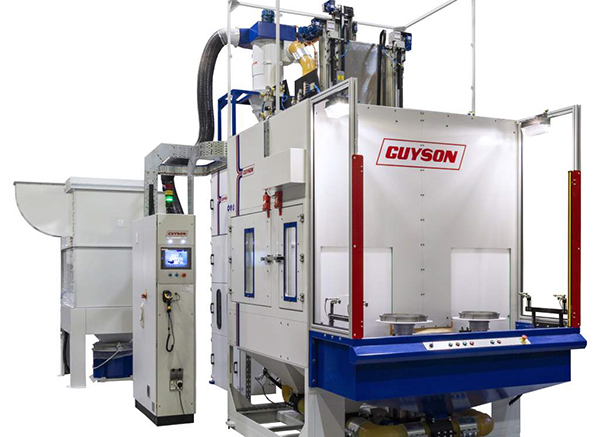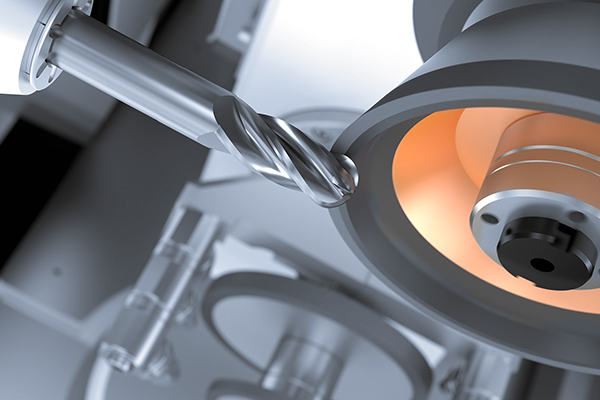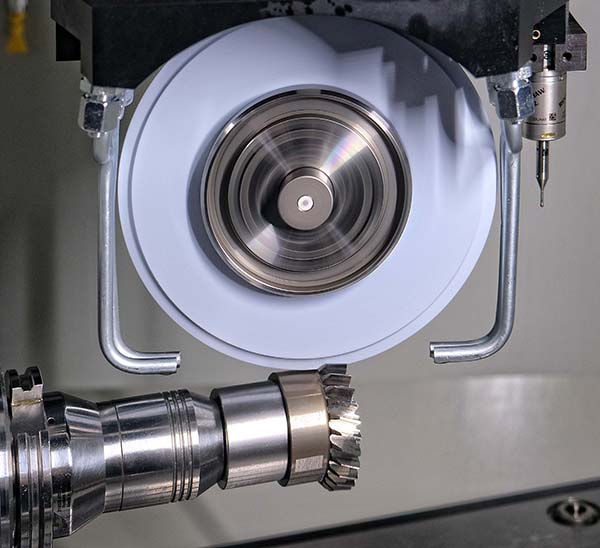
Guyson International has added the Multiblast RXS1400 automated blast system to its portfolio of rotating-indexing spindle solutions. Suited to the complete surface treatment of components that can be blast-finished or shot-peened while rotating about one axis, Guyson’s largest standard indexing system can handle components with a maximum component size of 400 mm high by 400 mm diameter, with weight up to 25 kg.
Notably, the blast system is suitable for medium to high volumes of: automotive transmissions; aerospace and land-based turbine components; railway, wind and construction equipment; and substrate materials in metal, composite or exotic alloys.
The Guyson Multiblast RXS1400 machine is a six-spindle rotating indexing blast system that can process multiple parts simultaneously; two blast stations make it extremely suitable for high volume manufacturing. Each of the six work spindles are spaced equally around the perimeter of the rotary indexing table and arranged so that at all times two of the spindles are outside the machine during the blasting operation for loading and unloading. Due to the rapid table indexing of the RXS1400, the load/unload environment is generally protected with a light-guard failsafe safety device.
Guyson’s sales manager Ian Rayner states: ″Customers can specify the RXS1400 as either suction-fed or pressure-fed, with the choice directed by application and throughput requirements.″
Parts are loaded on to the left-hand spindle and enter the blast chamber via pneumatic sliding doors. These open and close automatically and interface with the table indexing mechanism. Importantly, the doors also create a seal during the blast operation to prevent media and noise from escaping to the work environment.
For further information
www.guyson.co.uk
























